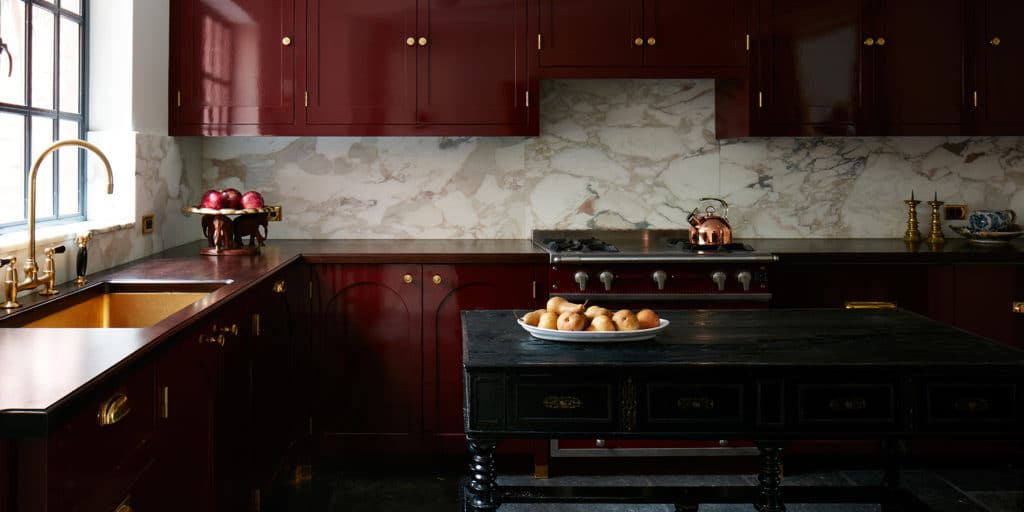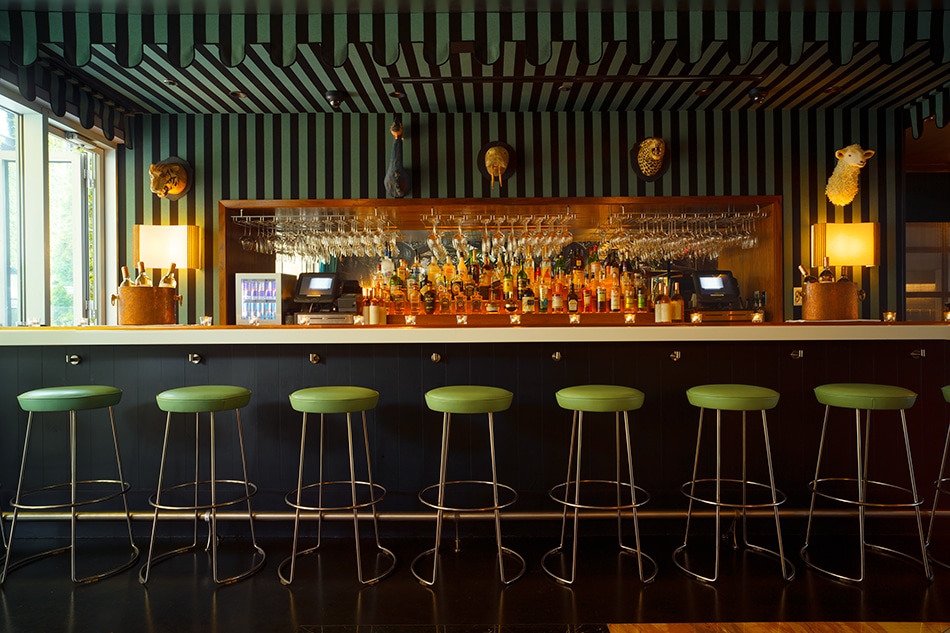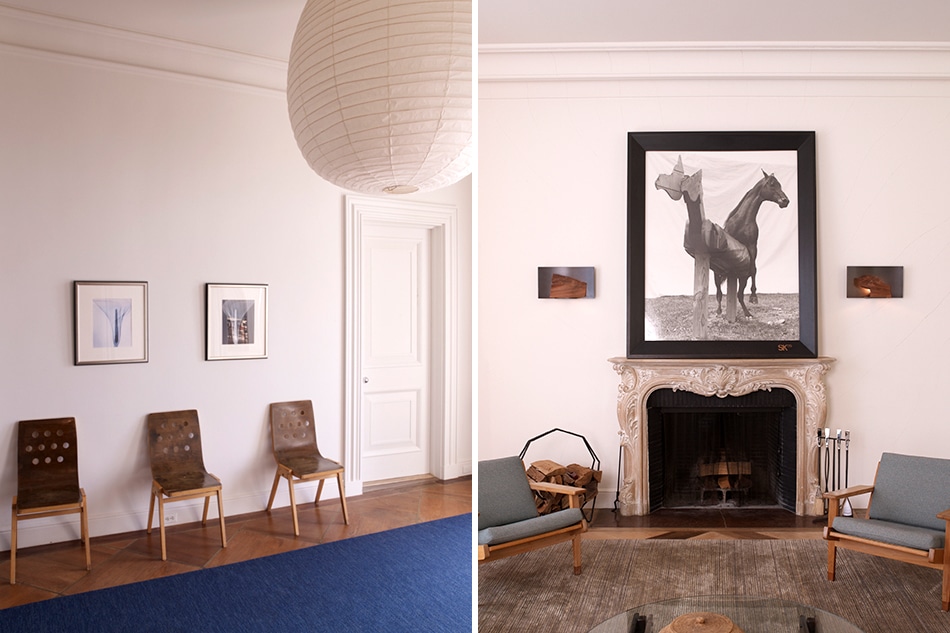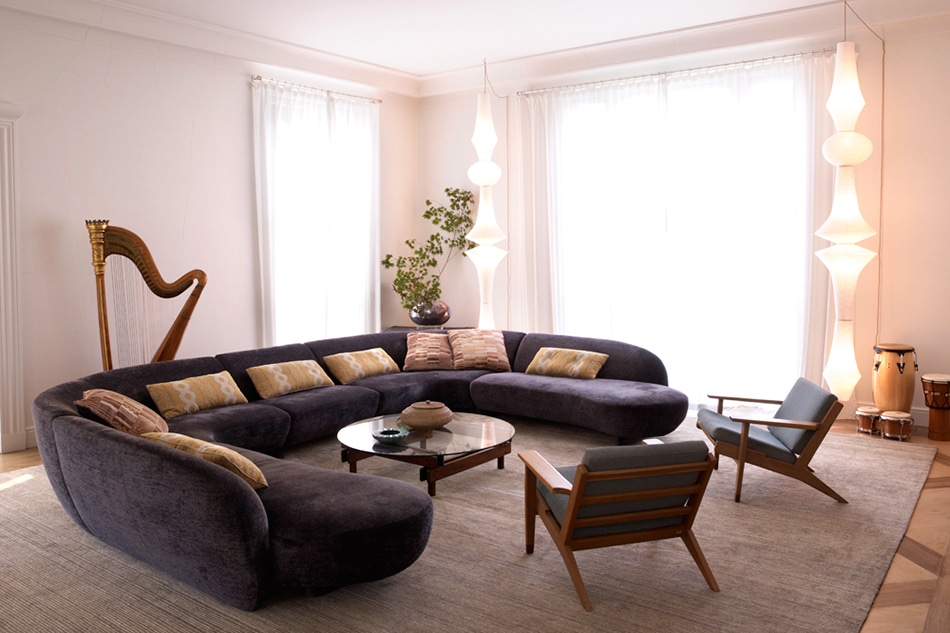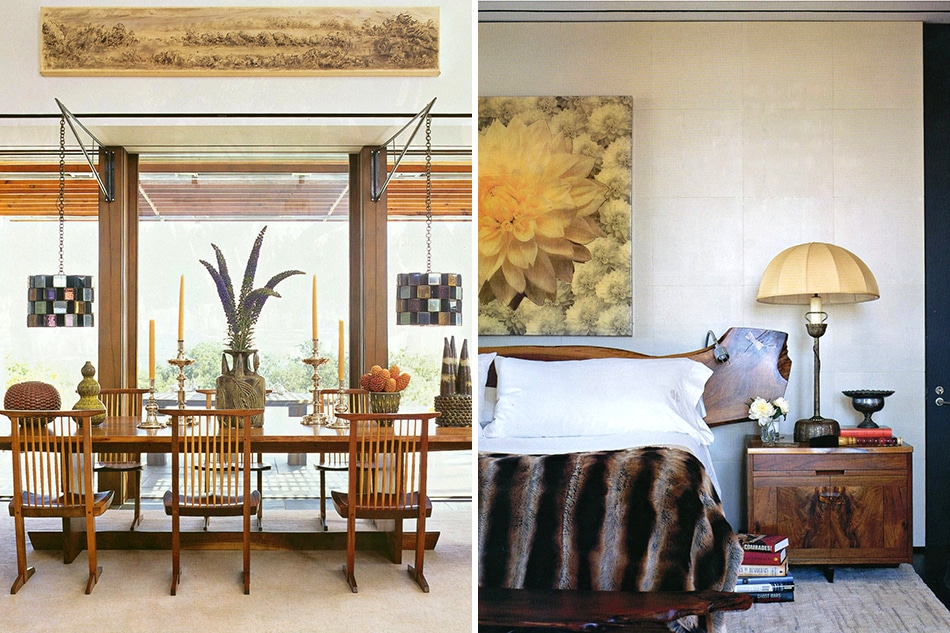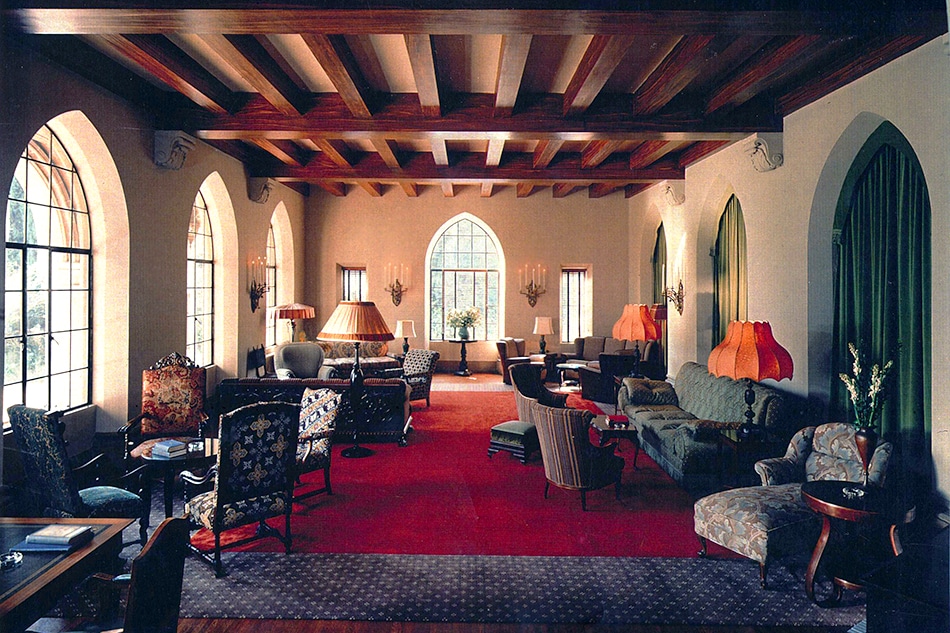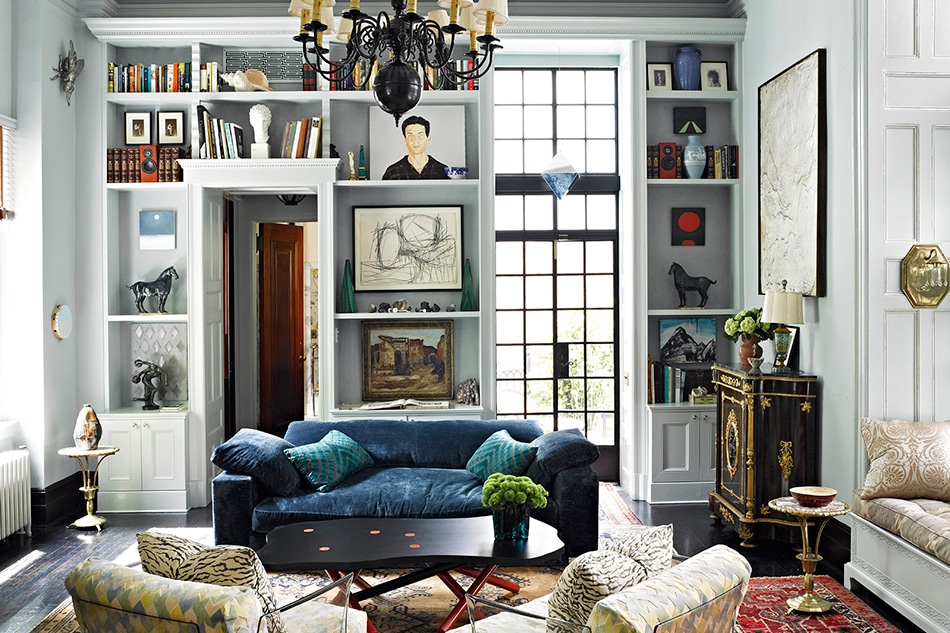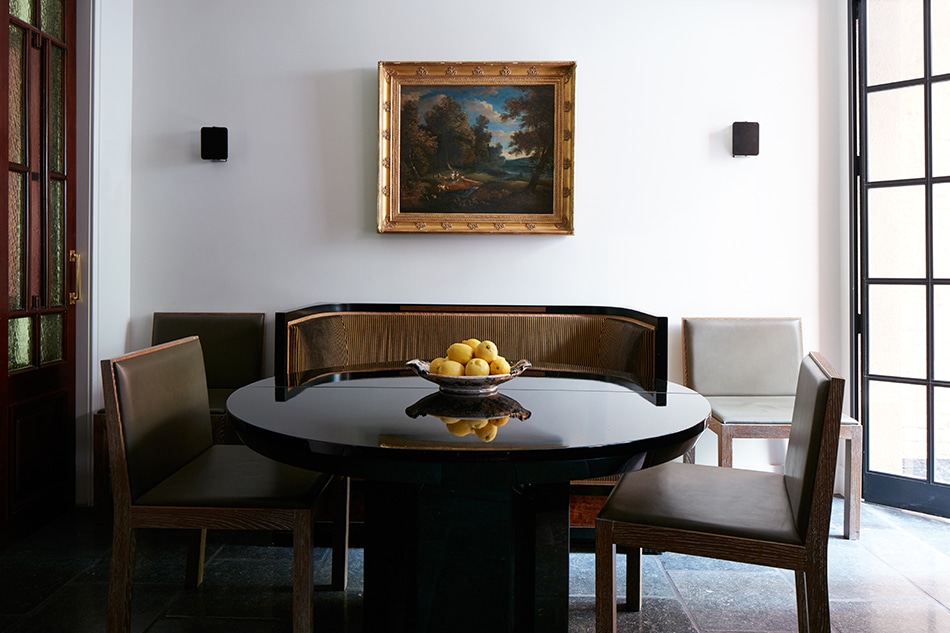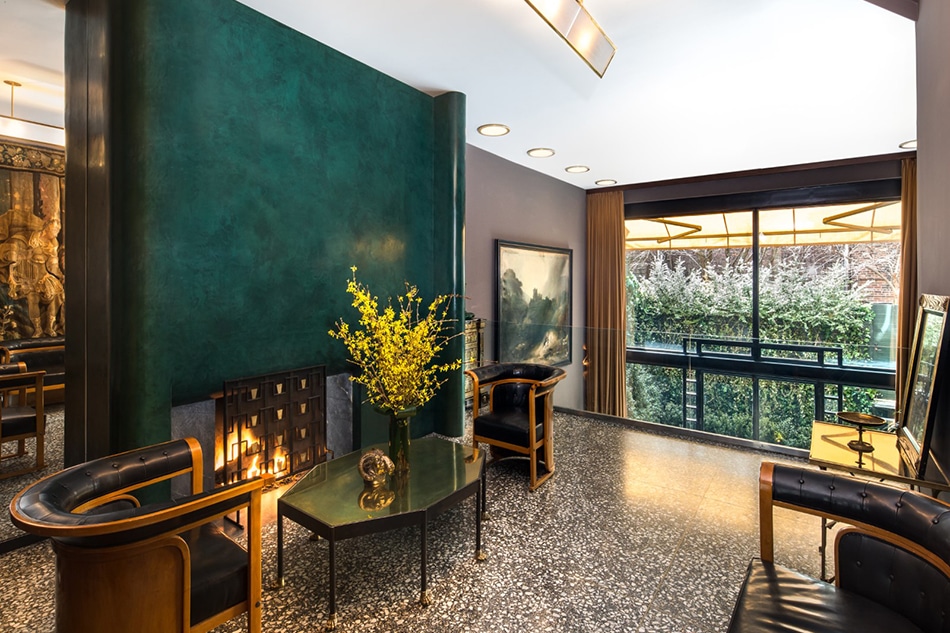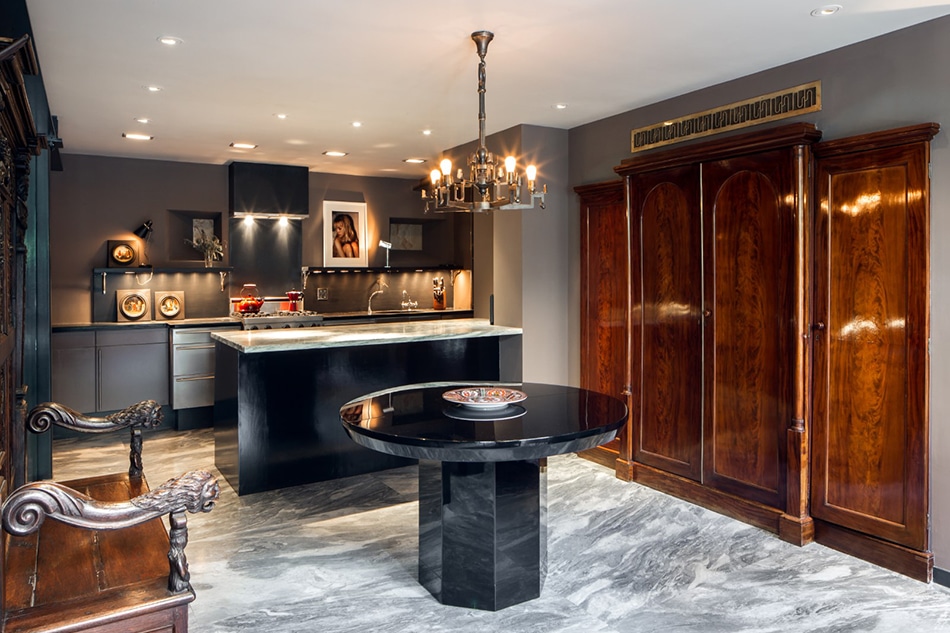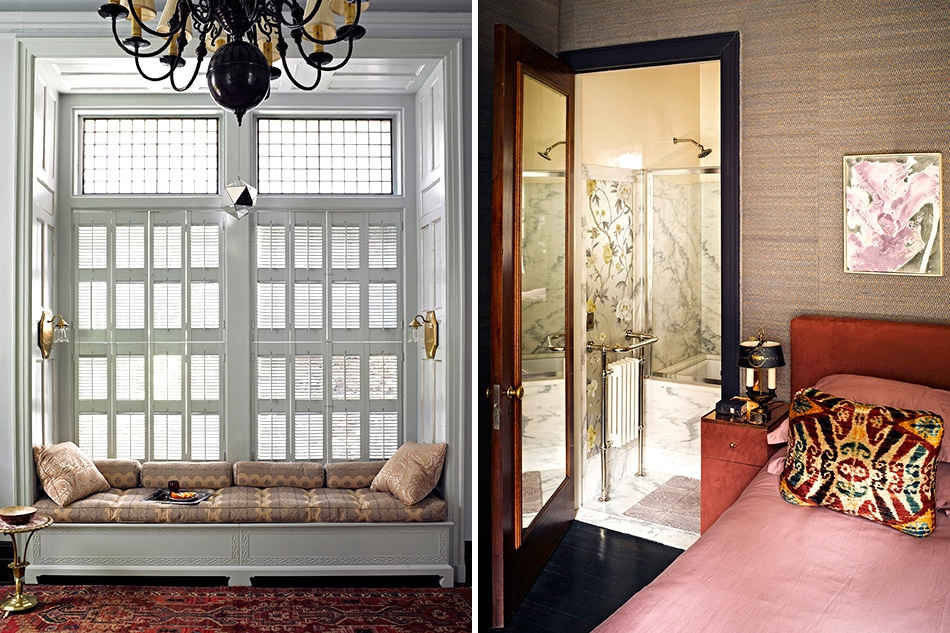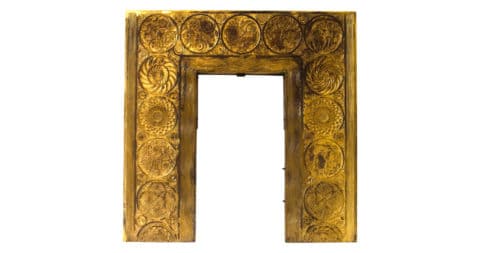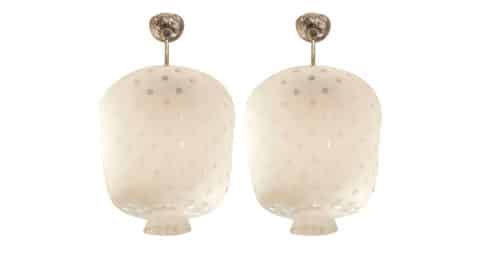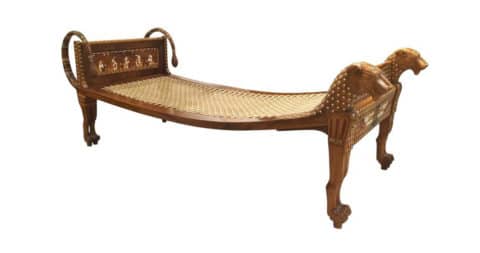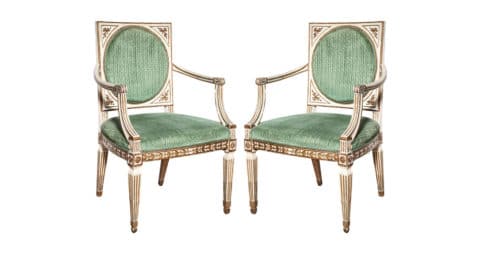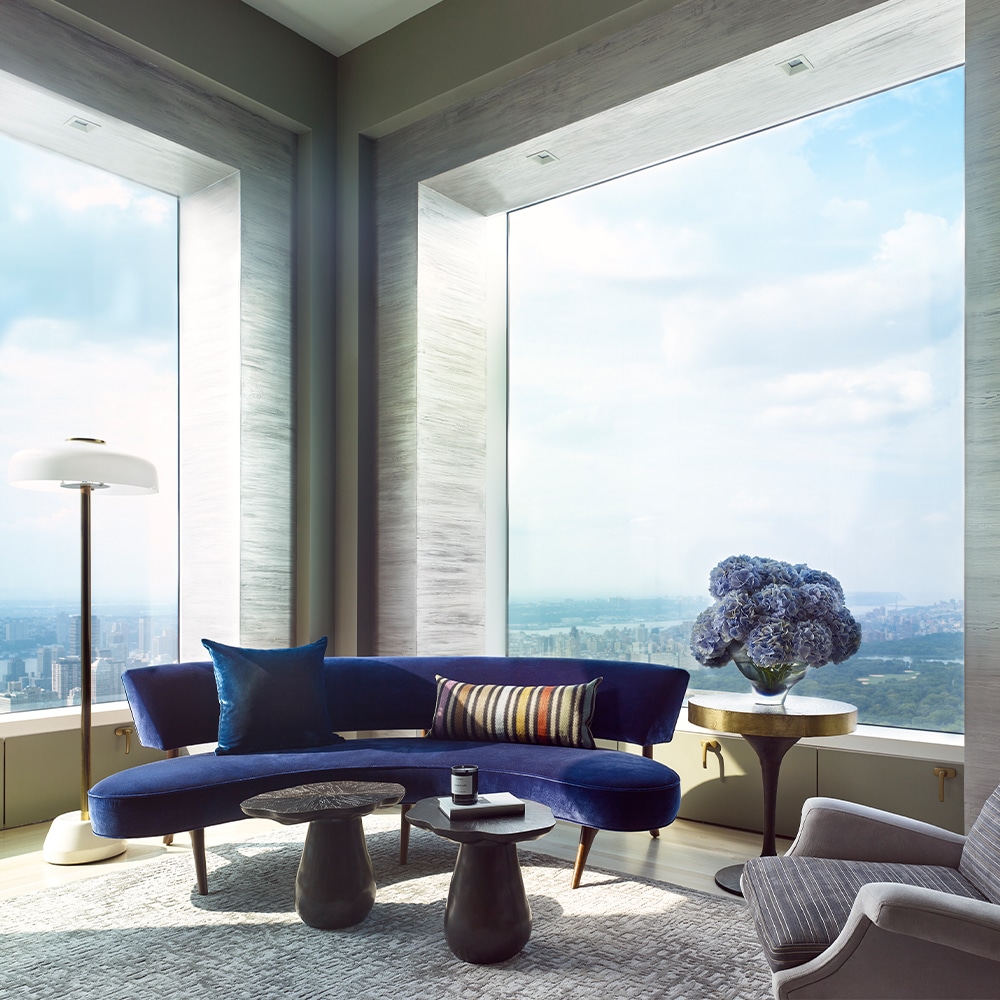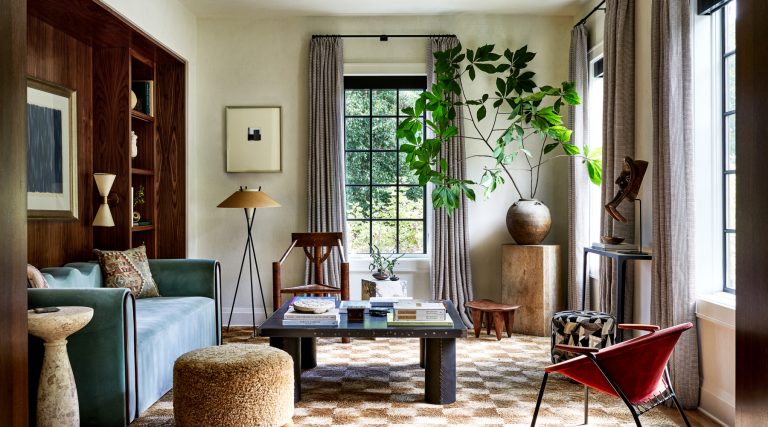
February 13, 2017Fernando Santangelo’s successful redesign of the Chateau Marmont in the mid-1990s earned him the attention (and high-profile projects) that enabled him to launch his own firm. Portrait by Lucas Michael. Top: For the kitchen of this Greenwich Village townhouse, Santangelo used an antique table as a kitchen island. Photo by Stephen Kent Johnson
It all begins, as so many good L.A. stories do, at the Chateau Marmont. It was the mid-1990s, and the fabled property’s new owner, André Balazs, was in search of a designer. Like so many Hollywood stars before it, the iconic property — built in 1929 to resemble a Loire Valley château — had become terminally démodé. Its once glittering lobby evinced all the elegance of a funeral parlor waiting room and considerably less glamour.
Enter Fernando Santangelo, an under-the-radar Uruguayan-born, New York–based creative who cut his teeth in the downtown art and nightlife scenes, creating vivid installations for such nightclubs as FEZ and M.K. Armed with a constellation of historical references — books of German interiors from the 1920s, film stills from the early Technicolor years and original set designs — the young designer won over the hotelier with his creative vision. “André and I approached the hotel’s restoration collaboratively, very much as one would a Hollywood production,” Santangelo recalls. “I remember encountering photographer Helmut Newton, who lived at the Chateau, in the elevator one day, and he was very concerned about what would come of the place. I assured him we weren’t doing anything radical — it was a very sensitive but much needed reinvention.”
Remember, this was a period when statement minimalism — brought into vogue by Philippe Starck at the Delano in South Beach and the Mondrian in West Hollywood — was reaching its apogee. Eschewing the era’s obsession with the bright, shiny and new, Santangelo gently infused the property with new life, restoring some elements to their former glory and giving others an entirely new function. He stripped the “sickly pale yellow” from the ceiling’s wooden beams, scoured L.A.’s secondhand stores for “Middle Europe” furniture from the 1930s and ’40s and reconstructed the original reception desk based on leftover scraps and vintage photos from when the hotel opened. “With the project and others that followed, it was not about stripping away history but rebuilding it in an entirely new way,” the designer explains.

The lobby of the Chateau Marmont features vintage furniture reupholstered in fabrics from Clarence House. Photo by Tim Street-Porter
You could say that the superbly restored Chateau Marmont — which immediately became, and remains, a favorite of Tinseltown insiders — provided the blueprint for Santangelo’s successful practice. “It turned out to be the ultimate calling card,” says the designer, who founded his eponymous studio in 1995 on the strength of this commission. The project paved the way for all the high-profile projects he has undertaken since: down-on-their-luck historic residences; city apartments requiring a glamorous, celluloid-infused renovation; and hospitality projects requiring the nips and tucks necessary to achieve hot-spot status. In the past two decades, Santangelo has attracted a client list of bicoastal creative types — filmmakers, philanthropists, artists and photographers — who are drawn to his historically informed, architecturally sensitive but wholly original design vision.
Bette Midler, a longtime client and friend, called on Santangelo to create her oasis-like penthouse on New York’s upper Fifth Avenue. “When she moved uptown, Bette wanted to re-create the spirit of her former loft in Tribeca,” Santangelo explains. Together, Midler and Santangelo sought to marry downtown cool with uptown grandeur, creating a richly layered design scheme that synthesized such disparate styles as Art Moderne and Scandinavian modernism. To find spectacular pieces, Midler and Santangelo visited Vienna (“Bette loves Josef Hoffmann furniture”) and Paris’s Saint-Ouen flea market.
“When I’m not working, I am home drinking endless pots of tea,” Santangelo confesses. “I’ve never been one for working the social scene — in fact, I can be a little bit of a hermit.”

Pendant lamps hang from the soaring ceiling in this Millbrook, New York, home’s light-flooded conservatory. The farmhouse sink is by the German Silver Sink Co. Photo by Joshua Jordan
While reverent of history, Santangelo is not confined by it. This attitude appeals to clients like Fabiola Beracasa Beckman, a Manhattan-based philanthropist, art collector and filmmaker. “I was drawn to Fernando for his ability to create a dreamlike world that speaks to the past while also feeling completely contemporary and appropriate for modern life,” she says. “His work reminds me of Renzo Mongiardino, who designed an apartment in which I was lucky enough to grow up.”
With Santangelo’s guidance, Beracasa Beckman is patiently transforming an early 1800s Federal townhouse on Manhattan’s West Side. The designer’s process is often iterative, developed in close collaboration with clients. “It was important for my husband and me to live in the house first,” says Beracasa Beckman. “Fernando really understands that. It takes time and a certain amount of obsession. You could say that a Fernando Santangelo project is never truly finished.”
For Beracasa Beckman’s home, many of Santangelo’s ideas incorporated the couple’s extensive modern art collection, which includes a large Sol LeWitt installation, which was painted directly on the wall by his studio artists and extends to the entry hall, complementing the space’s restrained, elegant moldings. “Fabiola’s house had previously gone through a fake historical renovation,” Santangelo says. “I stripped all the colors, drapes and fixtures that made it look like an over-made-up lady. We also redid some of the entrances to the parlor, preserved the moldings and changed some details for more restrained ones. I then painted it all a shade of white, which made it feel clean and uniform.”

The parlor of this home in Cobble Hill, Brooklyn, includes artwork by Peter Seidler and a coffee table from Regan & Smith. Photo by Leslie Williamson
Many and varied, the designer’s passions allow him to create audacious but no less sophisticated spaces that manifest a lively dialogue between the past and the present. He draws from a huge spectrum of aesthetic movements with alacrity, frequently consulting his vast reference library, which overflows with volumes of Hitchcock film stills, issues of Moderne Bauformen magazine and architecture books from the 1920s. “I like [fashion designer] Paul Poiret for his sense of design,” Santangelo says. “I’m also infatuated with art and design that became fashionable with the discovery of Tutankhamen’s tomb.” The designer continues his list of obsessions, which include “Spanish and Italian Baroque paintings, Eileen Gray always and Carlo Scarpa everything.”
Santangelo’s curiosity and appetite for knowledge stem from his art school background, also responsible for his inimitable, painterly sense of color. Later, as an impoverished East Village artist living on the Bowery, he became infatuated with the assemblage art of Joseph Cornell. Low-key, amiable and often droll, the designer evinces the persona of a tireless creative visionary. “When I’m not working, I am home drinking endless pots of tea,” Santangelo confesses. “I’ve never been one for working the social scene — in fact, I can be a little bit of a hermit.”
That said, Santangelo has a tight-knit and interesting group of friends. “I’ve known Fernando since the eighties in the East Village and have watched him transform spaces very deftly from hovels to sites of inspiration,” says artist Jack Pierson, whose jewel box of an apartment in New York’s West Village Santangelo designed. The designer painted the apartment’s walls the perfect shade of whale blue and, with a novelist’s eye for details, remixed the artist’s existing furniture and collection of art and objects. “It’s all about coming up with a story of somebody that could have previously lived there. It only works with old houses, but it’s like writing fiction,” says Santangelo.
Pierson recalls the moment when he met fellow longtime Santangelo client Bette Midler. “She looked heavenward and said to me, ‘Well, Fernando is an artist.’ I couldn’t have agreed more, and I still do.”
